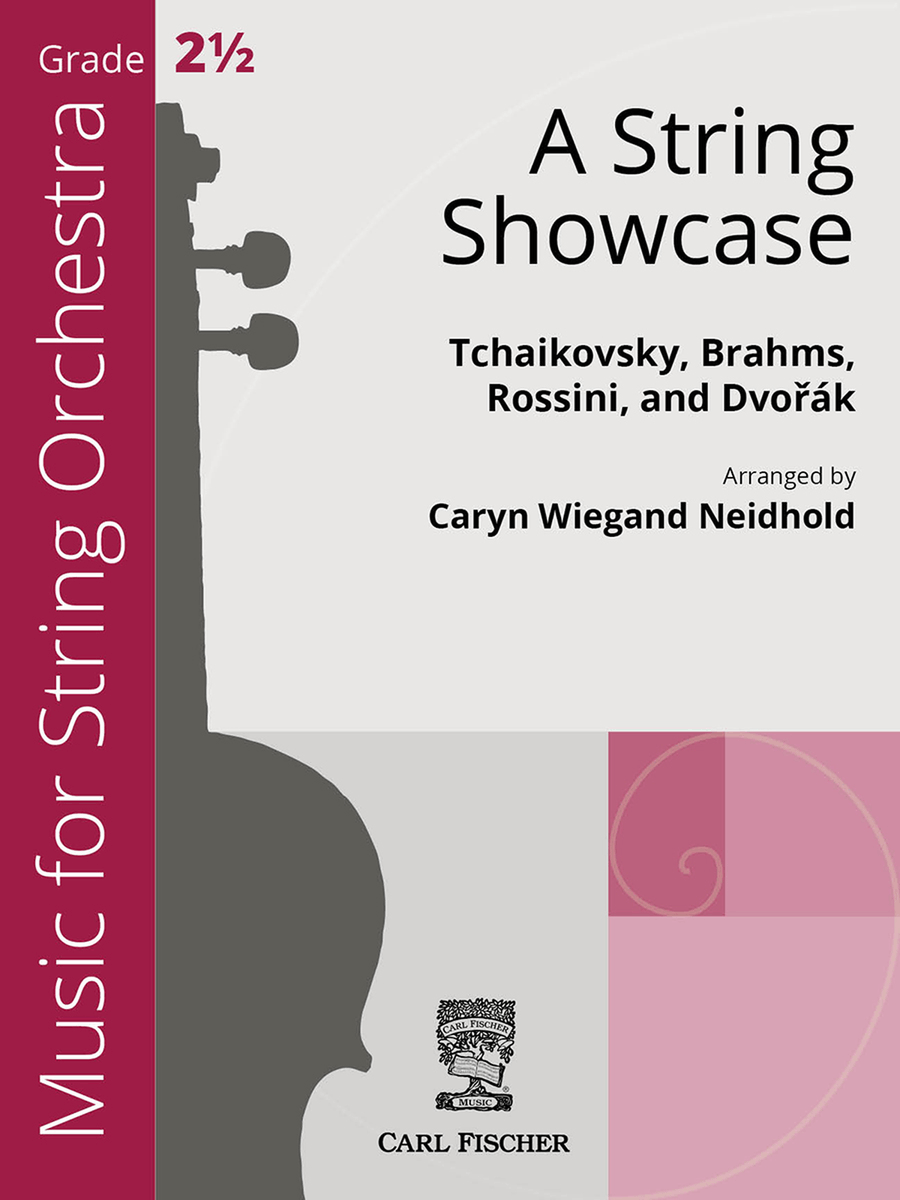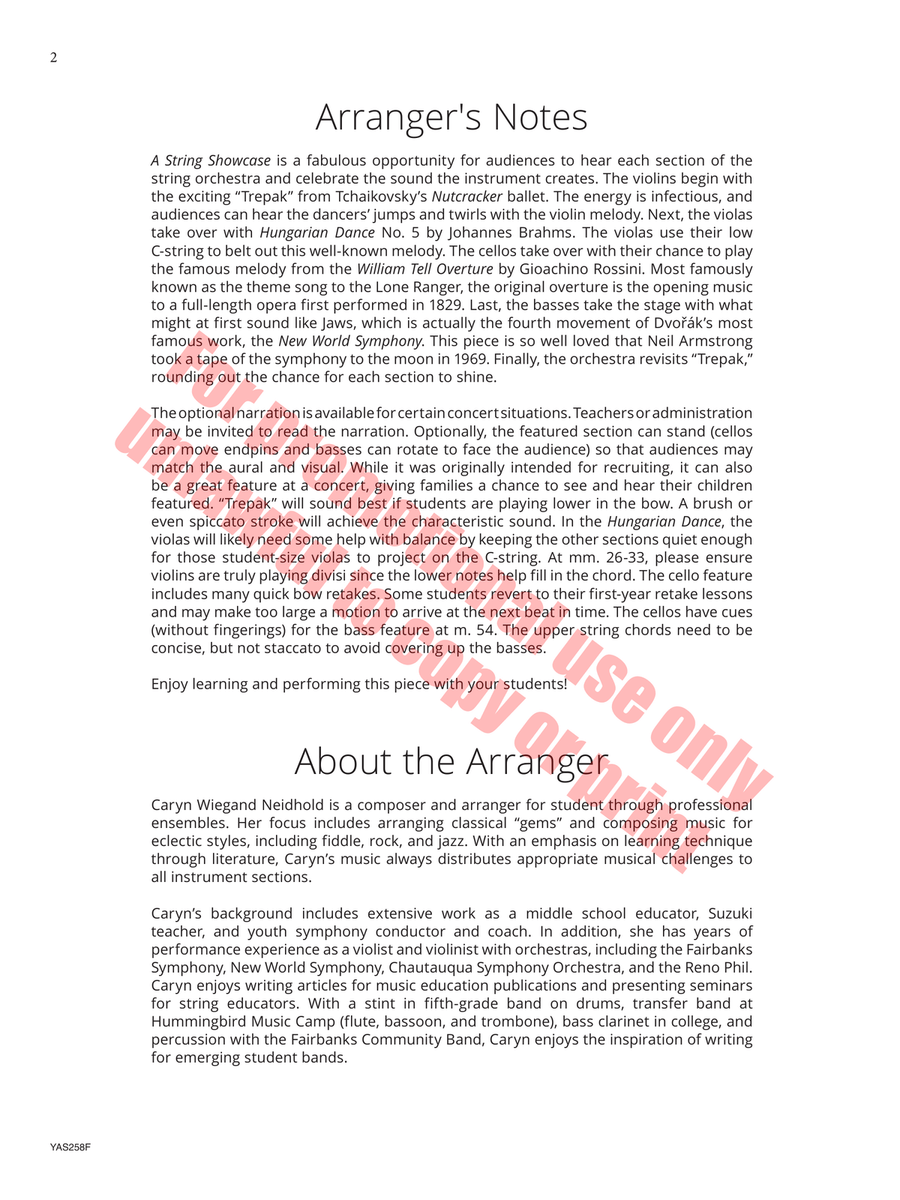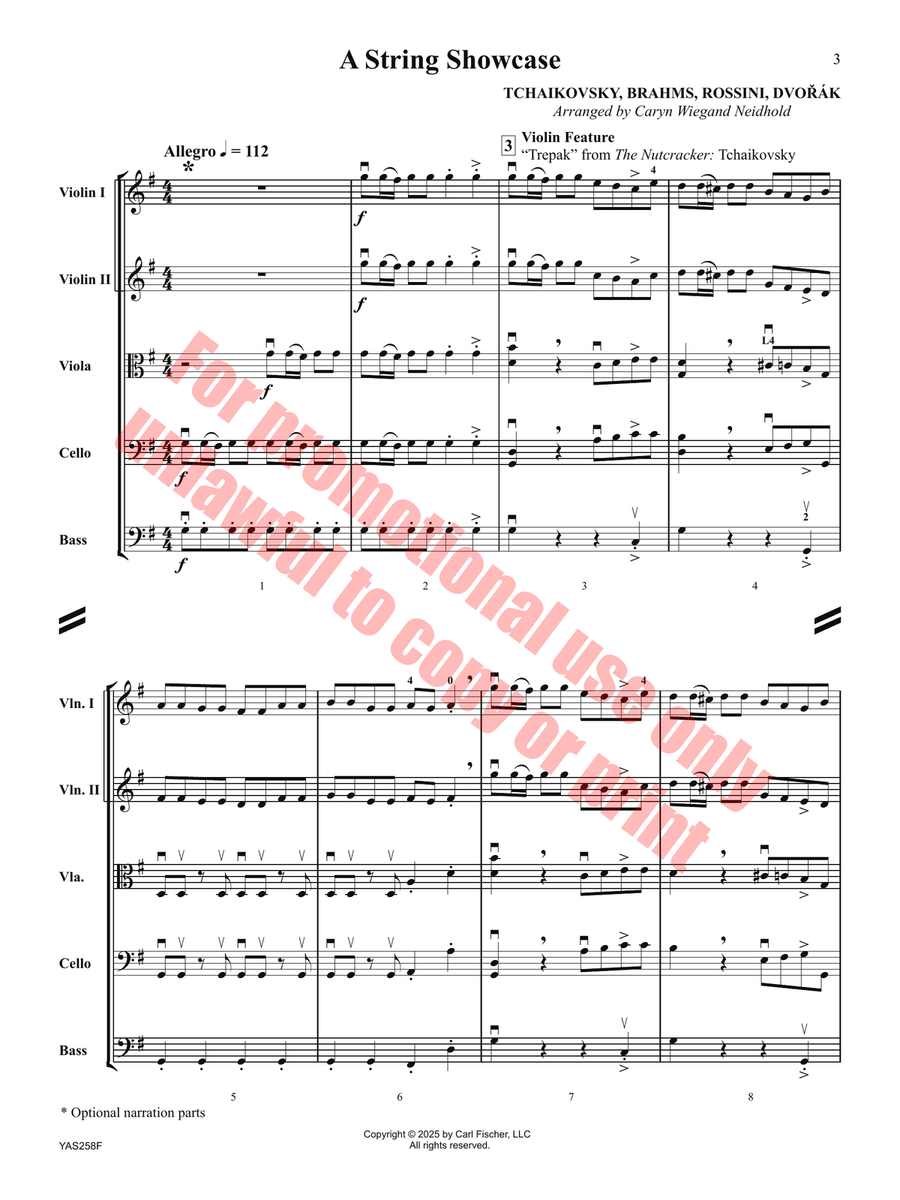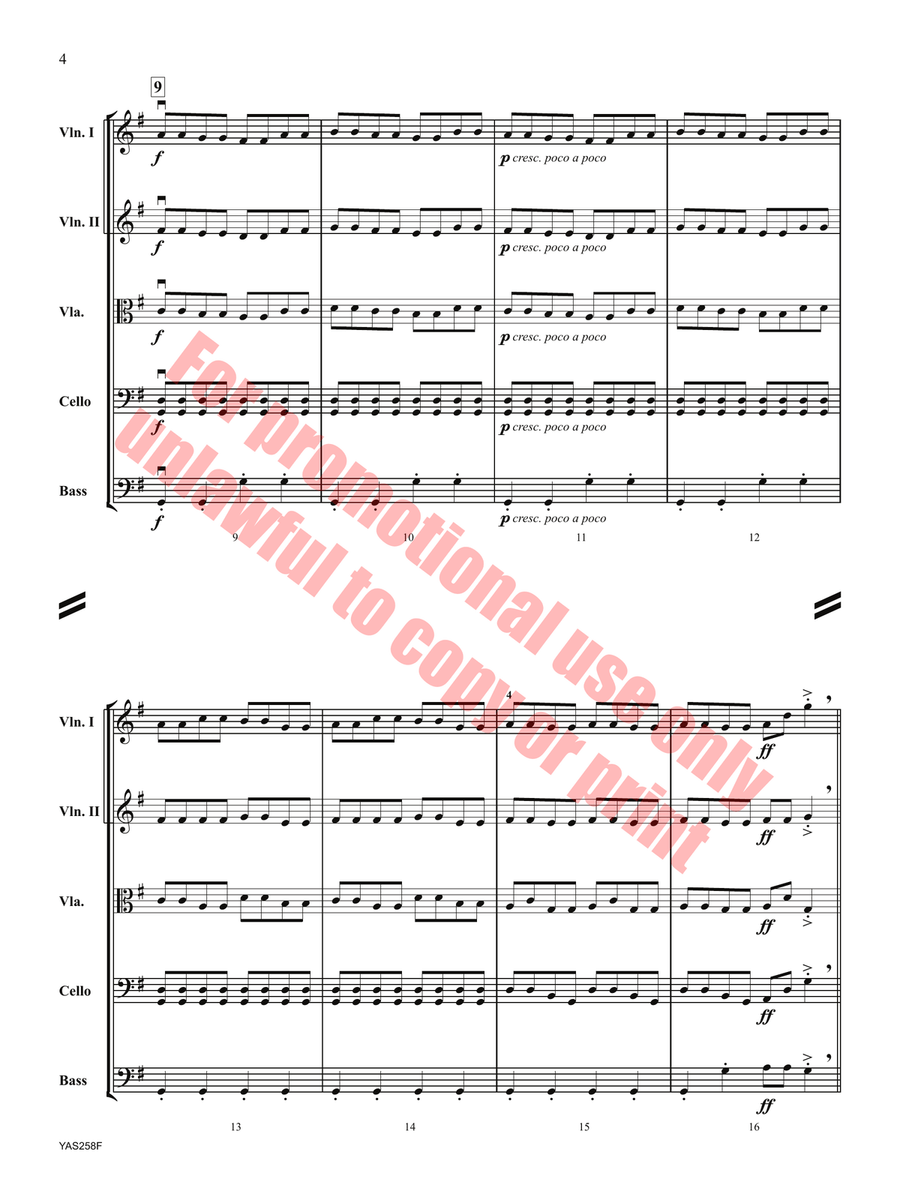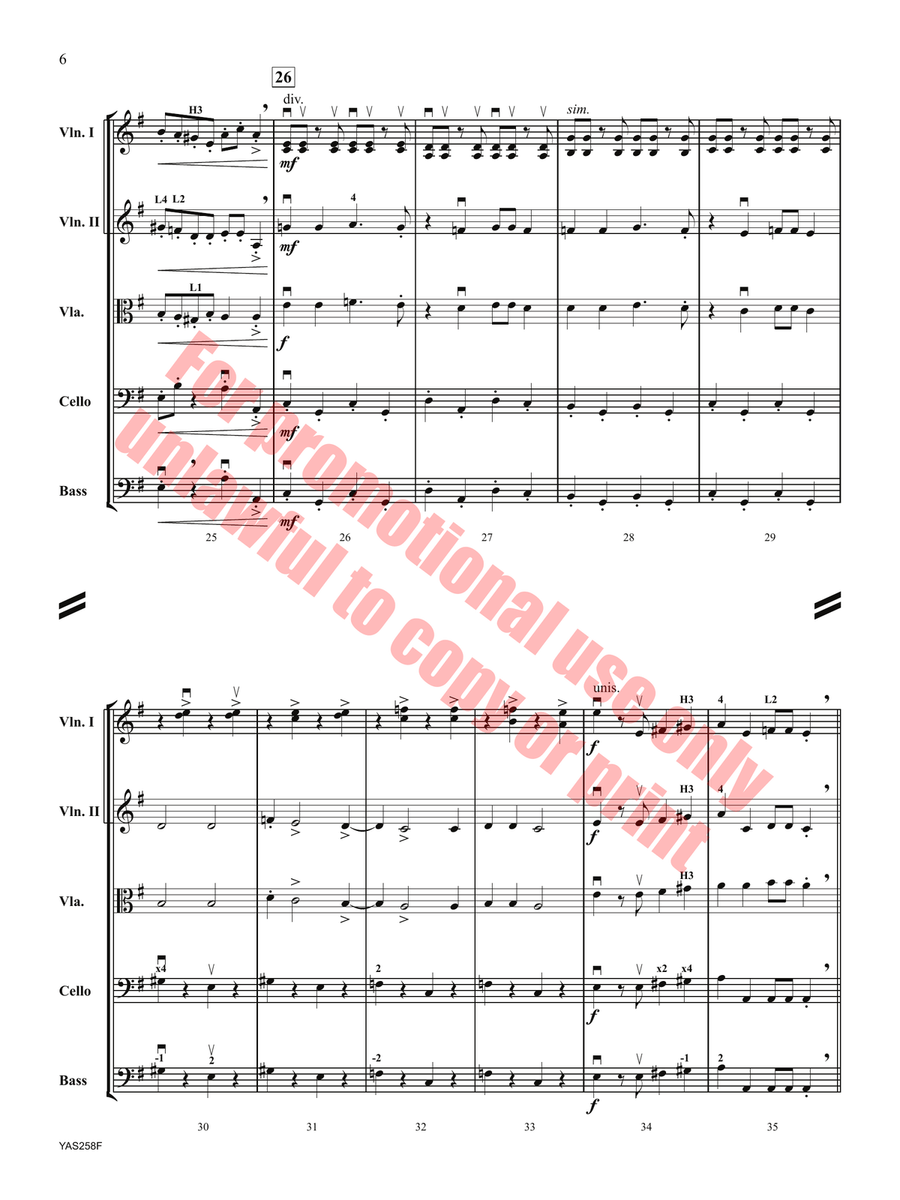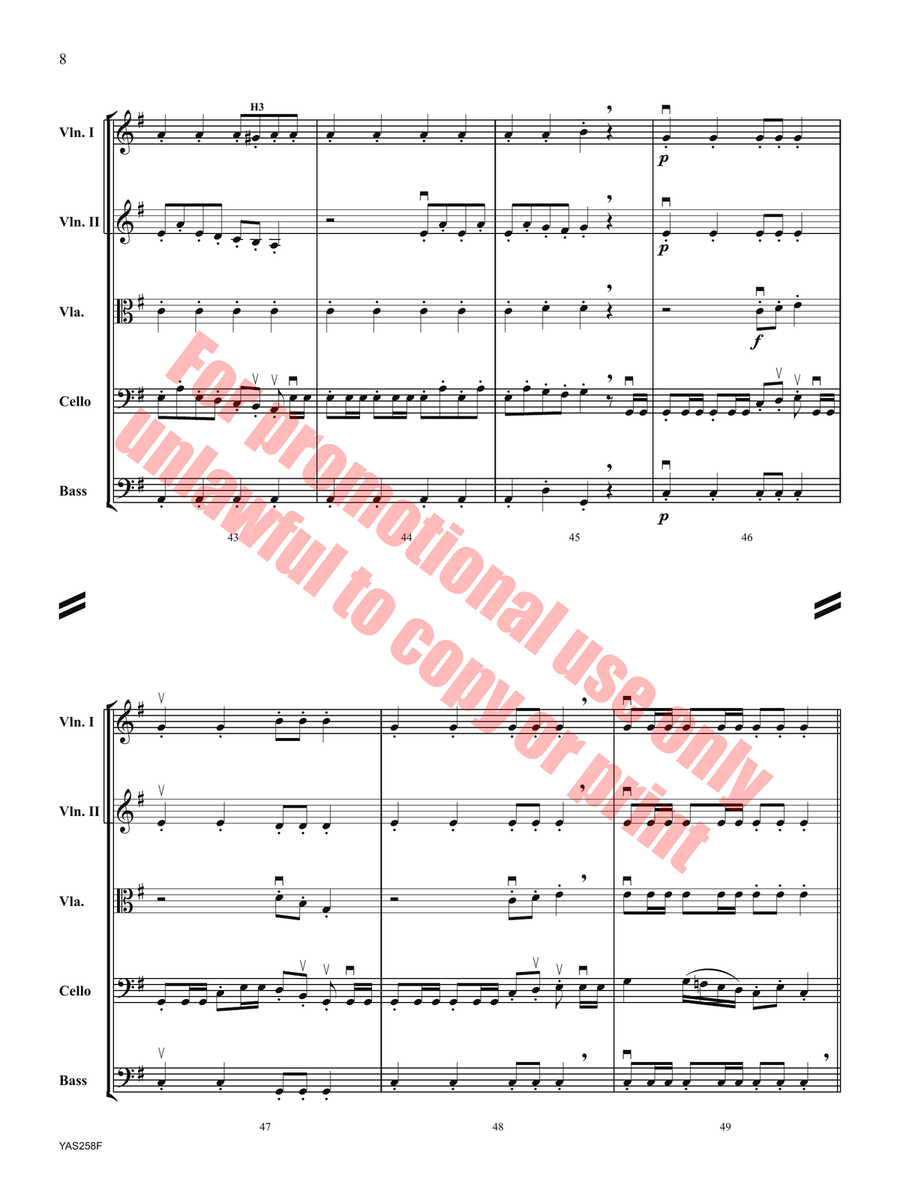Orchestra (String Sextet) - Grade 2.5
SKU: CF.YAS258
Composed by Various. Arranged by Caryn Wiegand Neidhold. Folio. Score and parts. 148 pages. Carl Fischer Music #YAS258. Published by Carl Fischer Music (CF.YAS258).
ISBN 9781491167731. UPC: 680160927159. 9x12 inches. Key: G major,e minor.
It’s time to show off your instrument! Whether highlighting accomplishments at the end-of-year concert, or introducing each string instrument in a recruitment performance, A String Showcase features the violin, viola, cello, and bass sections. Listeners will instantly recognize well-loved melodies by Tchaikovsky, Brahms, Rossini, and Dvorak. Optional narration is included with pauses marked in the score. Everyone gets a chance to shine in the spotlight in this celebration of strings.
A String Showcase is a fabulous opportunity for audiences to hear each section of the string orchestra and celebrate the sound the instrument creates. The violins begin with theexciting “Trepak” from Tchaikovsky’s Nutcracker ballet. The energy is infectious, and audiences can hear the dancers’ jumps and twirls with the violin melody. Next, the violas take over with Hungarian Dance No. 5 by Johannes Brahms. The violas use their low C-string to belt out this well-known melody. The cellos take over with their chance to play the famous melody from the William Tell Overture by Gioachino Rossini. Most famously known as the theme song to the Lone Ranger, the original overture is the opening music to a full-length opera first performed in 1829. Last, the basses take the stage with what might at first sound like Jaws, which is actually the fourth movement of Dvorak’s most famous work, the New World Symphony. This piece is so well loved that Neil Armstrong took a tape of the symphony to the moon in 1969. Finally, the orchestra revisits “Trepak,” rounding out the chance for each section to shine.Performance NotesThe optional narration is available for certain concert situations. Teachers or administration may be invited to read the narration. Optionally, the featured section can stand (cellos can move endpins and basses can rotate to face the audience) so that audiences may match the aural and visual. While it was originally intended for recruiting, it can also be a great feature at a concert, giving families a chance to see and hear their children featured.“Trepak” will sound best if students are playing lower in the bow. A brush or even spiccato stroke will achieve the characteristic sound. In the Hungarian Dance, the violas will likely need some help with balance by keeping the other sections quiet enough for those student-size violas to project on the C-string. At m. 26-33, please ensure violins are truly playing divisi since the lower notes help fill in the chord. The cello feature includes many quick bow retakes. Some students revert to their first-year retake lessons and may make too large a motion to arrive at the next beat in time. The cellos have cues (without fingerings) for the bass feature at m. 54. The upper string chords need to be concise, but not staccato to avoid covering up the basses.Enjoy learning and performing this piece with your students!Caryn Wiegand Neidhold.
About Carl Fischer Young String Orchestra Series
This series of Grade 2/Grade 2.5 pieces is designed for second and third year ensembles. The pieces in this series are characterized by:
--Occasionally extending to third position
--Keys carefully considered for appropriate difficulty
--Addition of separate 2nd violin and viola parts
--Viola T.C. part included
--Increase in independence of parts over beginning levels
